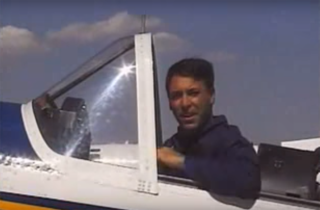
Audience
Educators
Grade Levels
Grades 9-12
Type
Other Multimedia, Videos
This NASA video segment explores how Newton’s Laws of Motion apply to the lift of an airplane. An instructor at NASA’s National Test Pilot School teaches that for an airplane to overcome the downward force of its weight, it must change the momentum of the air molecules colliding with the wings. This is accomplished by changing the air’s vertical velocity through increased propeller speed, sharpened angles of attack, widened wings or curved wings. Onscreen formulas and calculations represent the forces mathematically. For example, in one part, the instructor derives a formula from Newton’s second law to calculate the minimum flying speed of an aircraft. The instructor then flies the aircraft to test his calculations.
Lift and Rate of Change of Momentum, Lesson 3
Duration: 14 minutes 15 seconds
View on YouTube
More videos and video clips in this series:
Introduction to Newton’s Three Laws, Lesson 1
The Law of Inertia: Newton’s First Law
Force Equals Mass Times Acceleration: Newton’s Second Law
The Law of Action and Reaction: Newton’s Third Law
Weight and Balance, Lesson 2
Drag, Lesson 4
Thrust, Lesson 5
Take Off, Lesson 6
Climb and Descent, Lesson 7
Cruise, Lesson 8
The Landing, Lesson 9
The Landing: Approach
The Landing: Flare
The Landing: Rollout
The Landing: Summary

























